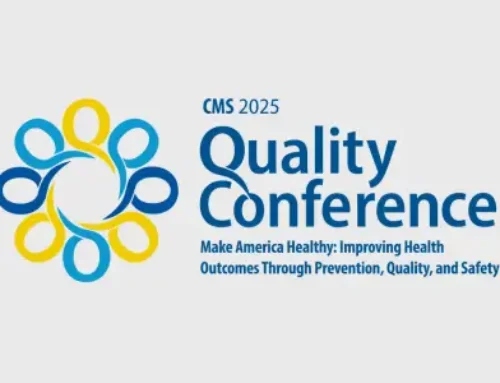On July 13, 2021, the Centers for Medicare & Medicaid Services (CMS) released the 2022 proposed rule summarizing proposed revisions to the physician fee schedule (PFS) and Quality Payment Program(QPP). AASM’s health policy team performed an analysis and found that several of the proposed revisions will impact sleep medicine coding, documentation, reimbursement, and participation in the Merit-based Incentive Payment System (MIPS), a component of the QPP. On Sept. 13, AASM submitted a comment letter on behalf of all individual and facility members. This article summarizes key highlights from the AASM comments.
Application of Budget Neutrality to Adjustment of RVUs
The proposed Medicare conversion factor for 2022 would lead to a 3.75% reduction in payments due to budget neutrality. The AASM strongly opposes the proposed reduction and urged CMS to use its authority to delay this reduction in reimbursement and to maintain current physician payment rates. While the reduction in the conversion factor is problematic, physicians also face other looming payment cuts that require Congressional action to be averted. These payment reductions include expiration of the moratorium on the 2-percent Medicare sequestration at the end of calendar year 2021 and statutory sequestration cuts of 4 percent required by “Pay-As-You-Go” legislation, which were triggered by the significant additional spending in the American Rescue Plan, enacted in March 2021. Consequently, physicians face collective payment reductions that total 9.75 percent.
Market-Based Supply and Equipment Pricing Update
CMS has been gathering data to support updating practice expense inputs for supply and equipment pricing, as the last supply and equipment prices were systematically developed over 15 years ago. CMS is also in the process of implementing a 4-year phase-in of new pricing, including equipment pricing for home sleep apnea test code 95806, which has already started to have a negative impact on sleep practices. Recognizing that supply and equipment pricing cannot remain constant, the AASM encouraged CMS to develop an ongoing process to update pricing for supplies and equipment to ensure appropriate pricing going forward. AASM staff will also reach out to members in the coming months to gather data regarding equipment pricing for 95806.
Telehealth and Other Services Involving Communications Technology
The AASM continues to advocate for telehealth waivers and for additions to the telehealth services lists to become permanent. The AASM noted that the benefits of increased use of telehealth for patients with sleep disorders include:
- Improved road safety, by allowing patients who experience drowsy driving (e.g., patients with narcolepsy, obstructive sleep apnea) to see their sleep medicine providers virtually
- Eliminated travel for patients who live a long distance from their sleep medicine provider, particularly those who do not reside in a rural setting
- Reduced reliance on caretakers, family members, and friends to drive elderly patients and those who are mobility impaired to an office visit
- Reduced risk of exposure to illnesses, in this case COVID-19, for patients who are immunosuppressed or immunocompromised
AASM also noted that making the additions to the telehealth list permanent, given ongoing problems for patients with obstructive sleep apnea (OSA) because of the recall of certain Philips Respironics devices, will allow patients to have existing equipment repaired or receive new equipment from durable medical equipment (DME) suppliers much faster and much more efficiently.
The AASM also believes that continuing to include services 99441 – 99443, Office/Outpatient telephone evaluation and management services, on the Medicare telehealth list will allow CMS to gather adequate data to support the carryover of these services as telehealth services.
Other Non-Face-to-Face Services Involving Communications Technology under the PFS
The AASM continues to support the public health emergency flexibilities for direct supervision requirements and strongly urges CMS to make the flexibilities permanent, given the successes demonstrated during the COVID-19 pandemic. These flexibilities have increased communication among clinicians and their residents, allowing them to provide guidance in different scenarios using audio/visual telecommunications.
Interim Final Provisions in the CY 2021 PFS Final Rule
The AASM strongly supports the CMS proposal to permanently adopt payment for G2252, (Brief communication technology-based service, e.g., virtual check-in service, by a physician or other qualified health care professional who can report evaluation and management services, provided to an established patient, not originating from a related E/M service provided within the previous 7 days nor leading to an E/M service or procedure within the next 24 hours or soonest available appointment; 11–20 minutes of medical discussion). AASM agrees that payment for a longer virtual check-in is helpful in determining whether an in-person visit is necessary, in some cases.
Valuation of Specific Codes
Drug Induced Sleep Endoscopy (CPT code 42XXX)
The AASM strongly agrees with the CMS proposal to implement the RUC-recommended work RVU of 1.90 for 42XXX, the Drug Induced Sleep Endoscopy code, and supports the RUC-recommended direct practice expense inputs as well.
Hypoglossal Nerve Stimulator Services (CPT codes 645X1, 645X2, and 645X3)
CMS used two arbitrary methods for calculating their proposed work RVUs for Hypoglossal Nerve Stimulator codes 645X1, 645X2, and 645X3, including calculating intra-service time ratios and applying incremental differences to value services within the same code family. The AASM strongly disagrees with the methodologies and work RVUs proposed by CMS for these codes and supports the RUC-recommended values of 16.00, 16.50, and 14.00 work RVUs for CPT code 645X1, 645X2, and 645X3, respectively, as proposed by the RUC, as a result of the surveys by our colleagues in otolaryngology-head and neck surgery. The AASM urges CMS to accept these RUC-recommended values.
Comment Solicitation for Impact of Infectious Disease on Codes and Rate setting
In response to the CMS request for comments regarding additional strategies to account for public health emergency-related costs, the AASM continues to urge CMS to immediately implement and provide separate payment, with no patient cost-sharing for CPT code 99072, Additional supplies, materials, and clinical staff time over and above those usually included in an office visit or other non-facility service(s), when performed during a Public Health Emergency, as defined by law, due to respiratory-transmitted infectious diseases. AASM also recommends that the code not be subject to budget neutrality. The CMS decision to finalize this code as a bundled service, on an interim basis, was disappointing. Again, as was obvious from the previously submitted RUC survey data, many physician practices are struggling to continue providing services throughout the ongoing public health emergency, due to additional direct and indirect costs related to infection control such as purchasing personal protective equipment (PPE) and additional cleaning supplies and making changes necessary to offices and facilities to implement safety measures such as social distancing.
Physician Self-Referral Updates
The U.S. Department of Health and Human Services (HHS) and CMS continue to offer several helpful clarifications and definitions in the proposed rule in an attempt to address the burdensome impact of the physician self-referral law, commonly known as the “Stark Law.” However, the agencies have done little to address the fragmented care experienced by most Medicare patients who have OSA, which afflicts about 30 million Americans, including an estimated 20-30% of the Medicare population. The AASM continues to advocate for the establishment of exceptions for board-certified sleep medicine physicians to provide therapeutic DME to Medicare patients for the treatment of OSA. The AASM also asked for clarification on the safe harbor to the anti-kickback statute and the Stark Law in the 2021 physician fee schedule final rule, “Patient Engagement and Support”, which says, “To further support coordinated care, the Final Rule provides a safe harbor that allows providers to offer tools and supports to patients for the improvement of quality, outcomes and efficiency. The tools and supports may be provided by a value-based enterprise, as defined in the Final Rule, to a target patient population.” Currently, DME suppliers are providing education to patients with OSA who receive positive airway pressure (PAP) therapy. However, sleep medicine physicians are in a better position than DME suppliers to educate patients who are prescribed PAP therapy on the goals, benefits, and importance of adherence to treatment.
Quality Payment Program Proposed Provisions
The AASM also commented on several proposed revisions to the Quality Payment Program including the establishment of higher performance thresholds and establishment of the MIPS Value Pathways (MVPs). Responses included the following:
- The ongoing public health emergency makes it difficult for eligible clinicians and groups to meet performance thresholds, as they continue to provide high quality care to patients amid lower patient volumes and higher operating costs. Therefore, the AASM strongly urges CMS to delay the increase in performance thresholds until the implementation of MVPs, which will combine clinical quality measures and improvement activities, and are proposed to ultimately replace the MIPS program.
- The AASM is still uncertain of the level of involvement of medical specialties in the development of MVPs, and we encourage CMS to reach out to relevant specialty societies to collect input from subject matter experts to ensure that MVPs are constructed in a way that will positively impact value-based care.
- The AASM encourages CMS to extend the timeline for requiring fully tested qualified clinical data registry (QCDR) measures within the MIPS program. While the AASM understands the importance of demonstrating the feasibility and scientific acceptability of quality measures, there are significant levels of burden and cost associated with collecting required data and performing the appropriate data analyses for QCDR measures.
- We suggest that CMS further delay the requirement for full scientific acceptability testing until the year following the end of the public health emergency. In the meantime, we strongly urge CMS to consider continuing to accept face validity data for QCDR measures.
- AASM applauds CMS for the delay in MVP implementation until calendar year 2023, given the recent surge of COVID-19 cases amid the ongoing public health emergency, and we agree with the goal to gradually implement MVPs for eligible clinicians and groups.
- For smaller specialties that may not have relevant MVPs to report, we recommend that these specialties either be allowed to submit their own MVP for CMS consideration or that the agency maintain the MIPS program for these clinicians. If ultimately the agency decides to move forward with sunsetting the MIPS program, we urge first testing MVPs, followed by close monitoring of MVP implementation to ensure program viability.
As CMS reviews all comments and prepares for publication of the final rule, AASM will continue to advocate on behalf of all individual and facility members to ensure their ability to receive appropriate reimbursement for the delivery of high-quality care to patients with sleep disorders.
Members may send questions about the proposed rule to coding@aasm.org. View additional Medicare resources from the AASM.





